Pest Alert
Authors: PJ Liesch, UW Insect Diagnostic Lab
Last Revised: 8/10/2024
Overview of Elm Zigzag Sawfly
The elm zigzag sawfly (EZS), Aproceros leucopoda (Hymenoptera: Argidae) is an invasive sawfly that attacks elm trees (Ulmus spp.). This insect gets its name from the distinctive “zigzag” feeding pattern of young larvae. EZS is native to parts of East Asia. In its native range it is considered a minor pest and is kept in check by natural enemies. EZS was detected in Europe in 2003 and quickly spread throughout much of the continent. It now ranges from western France and England to parts of Russia and Kazakhstan. In 2020, EZS was reported in North America for the first time in Quebec, Canada. The following year (2021) it was detected in the United States in Virginia. Currently, EZS has been identified in over 10 U.S. states, mostly in the northeastern part of the country. EZS was detected in Wisconsin for the first time in July 2024 and was quickly found in several counties across the state. In many cases, damage may be minor, but this invasive pest does have the potential to cause significant defoliation of elm trees.
Several factors help elm zigzag sawfly rapidly build populations and spread into new areas:
- Populations consist entirely of females, which can reproduce asexually (without mating)
- Potential exists for multiple generations each year
- Adults are capable of long-distance dispersal: 28-56 miles (45-90 km) per year
- Cocoons can occur on man-made items such as vehicles, which can facilitate movement
Host Plants and Damage
Elm zigzag sawflies only attack elm trees (Ulmus spp.). This includes a wide range of both native and introduced elm species, such as: American, Chinese, English, Siberian, slippery, and winged elms as well as elm hybrids. EZS can attack elm trees in both urban and forested areas.
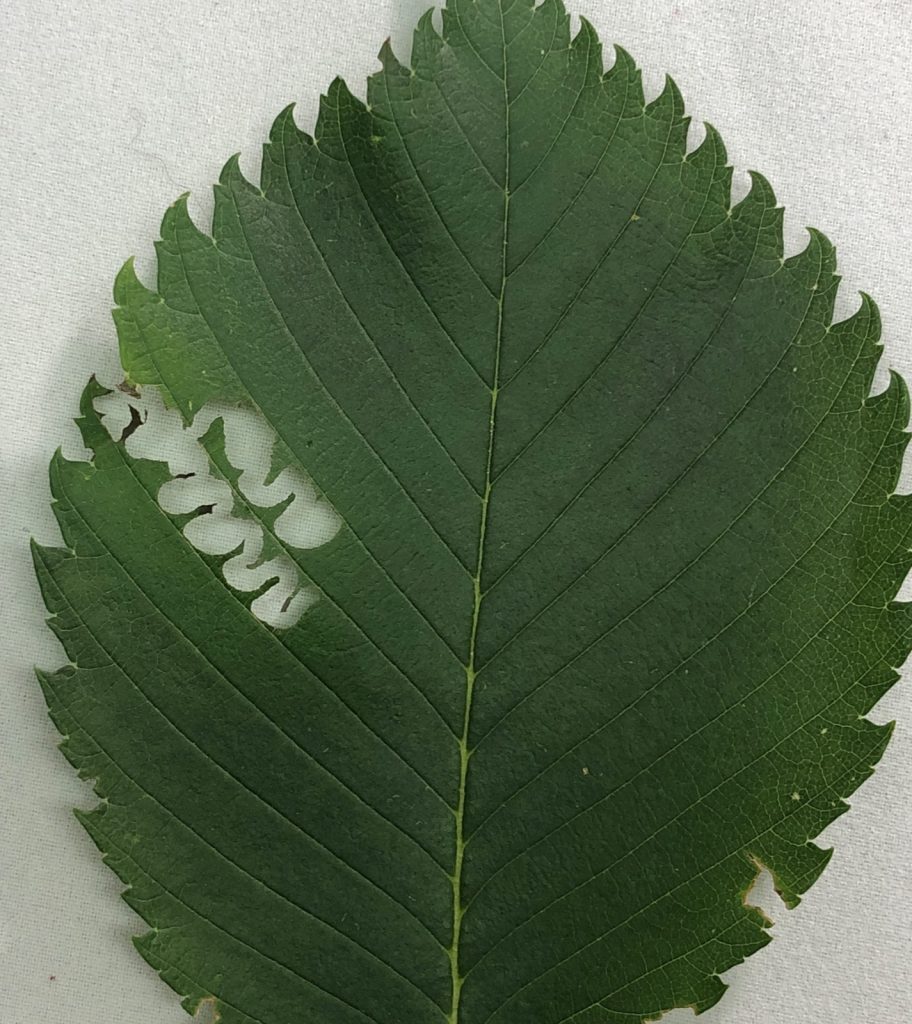
Photo credit: PJ Liesch, UW Entomology

Photo credit: PJ Liesch UW-Entomology
EZS larvae use chewing-type mouthparts to consume leaf material. Young larvae create distinctive, meandering “zigzag” patterns starting at the margins of leaves as they feed. Older larvae consume a greater amount of leaf material, creating large notches. While each larva consumes a relatively small amount of leaf material, multiple larvae can feed on and consume entire leaves, such that only thicker mid- and lateral leaf veins remain. Overall, damage from this insect can vary greatly from minor/cosmetic to complete defoliation. Repeated severe damage can weaken trees and lead to branch dieback. This could impact the long-term health and value of landscape and forest trees. These insects can also be a minor nuisance when the larvae construct cocoons on man-made objects such as outdoor furniture, vehicles, etc.
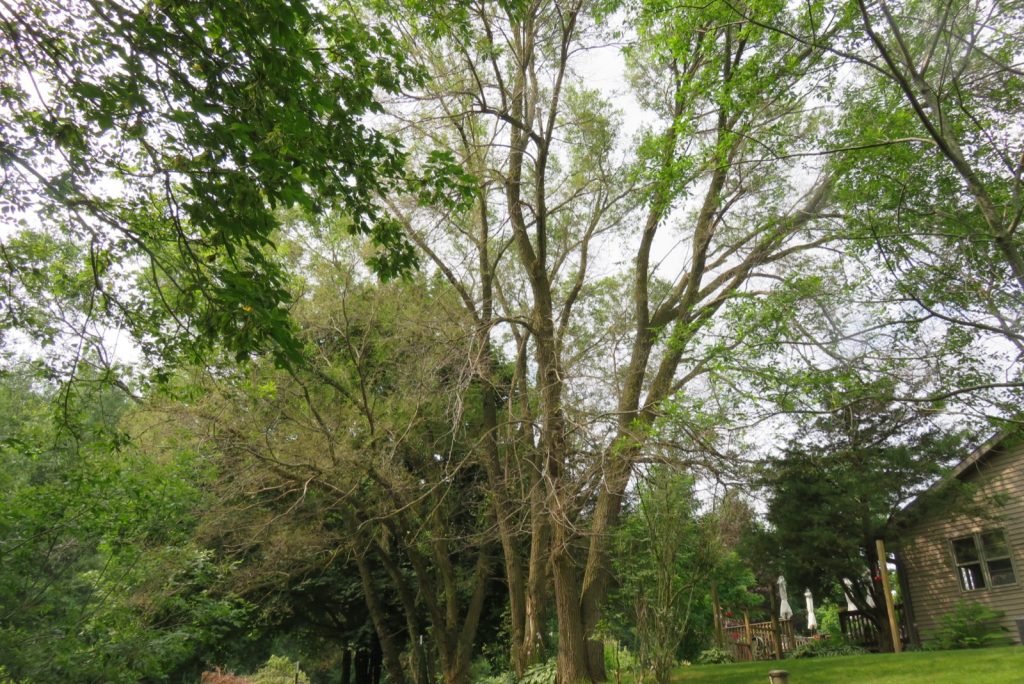
Life Cycle and Appearance
The elm zigzag sawfly undergoes complete metamorphosis and has four distinct life stages: egg, larva, pupa and adult. EZS overwinters as pupae amongst leaf litter and in other sheltered locations. Starting in spring, adults emerge and lay eggs. Adults are small (~ ¼-inch; 7-8 mm long), have a wasp-like appearance, and are blackish with dark, smoky wings and pale legs. EZS is somewhat unique in that all individuals are female. Females are able to reproduce via parthenogenesis – a process in which they lay viable eggs without having to mate. Adults are short-lived and can lay from 7-49 eggs along the edges of elm leaves. Within 4-8 days, the larvae emerge from eggs and begin to cause their distinctive “zigzag” damage to leaves. Larvae are pale green with a dark line on their head and dark T-shaped markings above their second and third pairs of thoracic legs. EZS larvae feed for 10-18 days and gradually increase in size, reaching lengths of just over 3/8-inch long (10-11 mm).
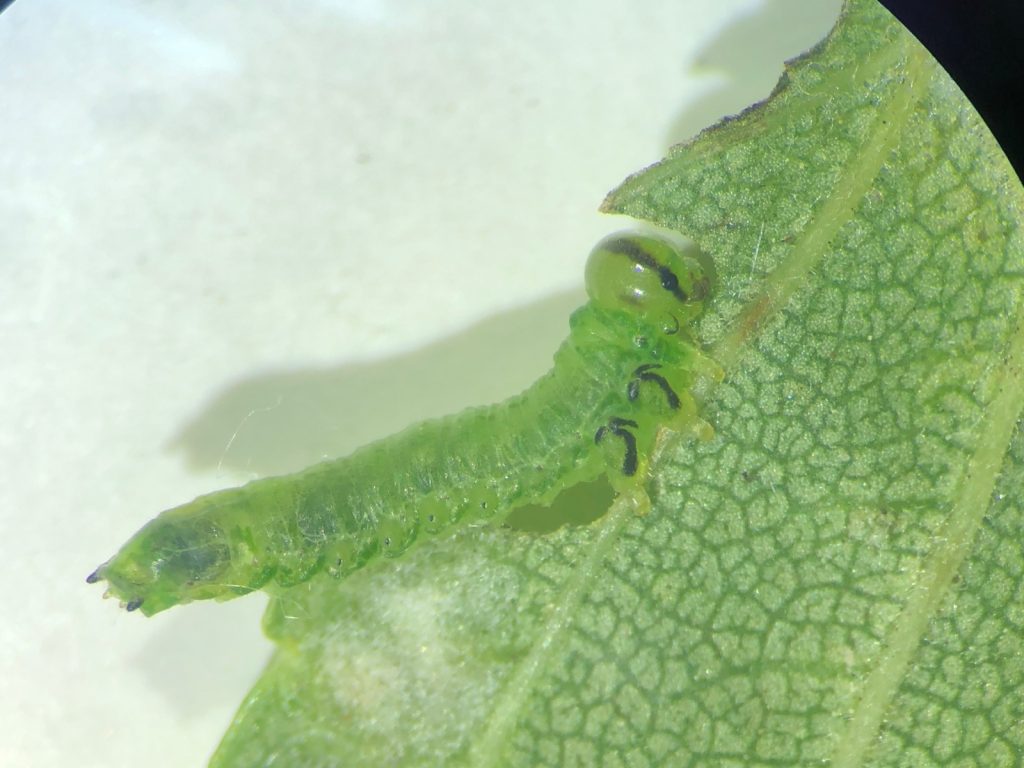
Upon reaching maturity, larvae create small cocoons in which they pupate. These cocoons are often found on plant material, but they may also be found beneath trees and on nearby man-made objects.
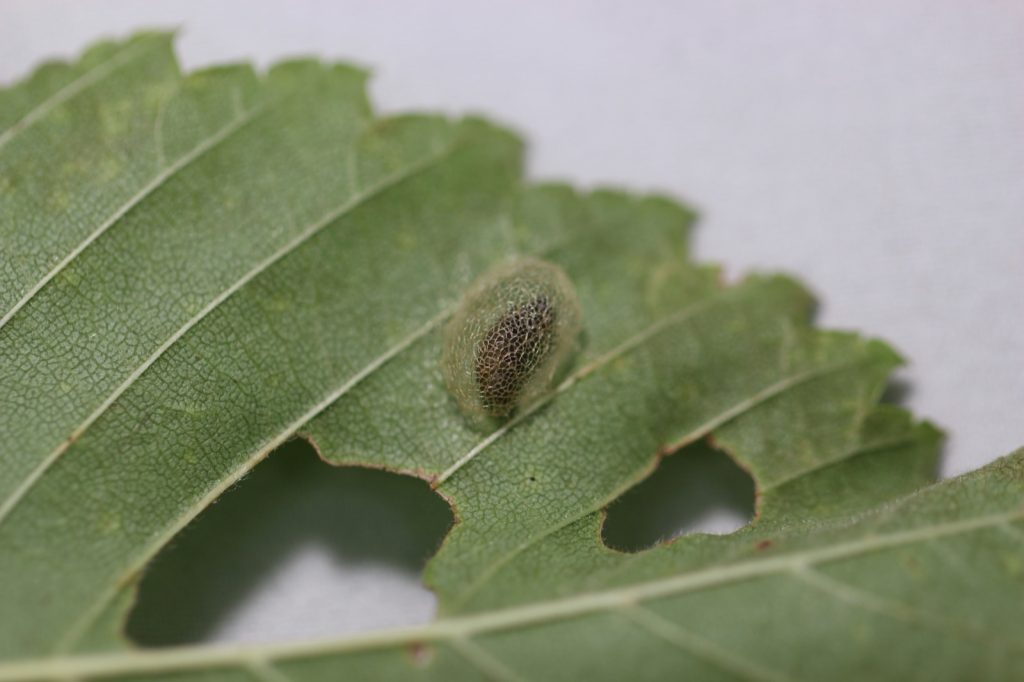
Photo credit: PJ Liesch, UW-Entomology.
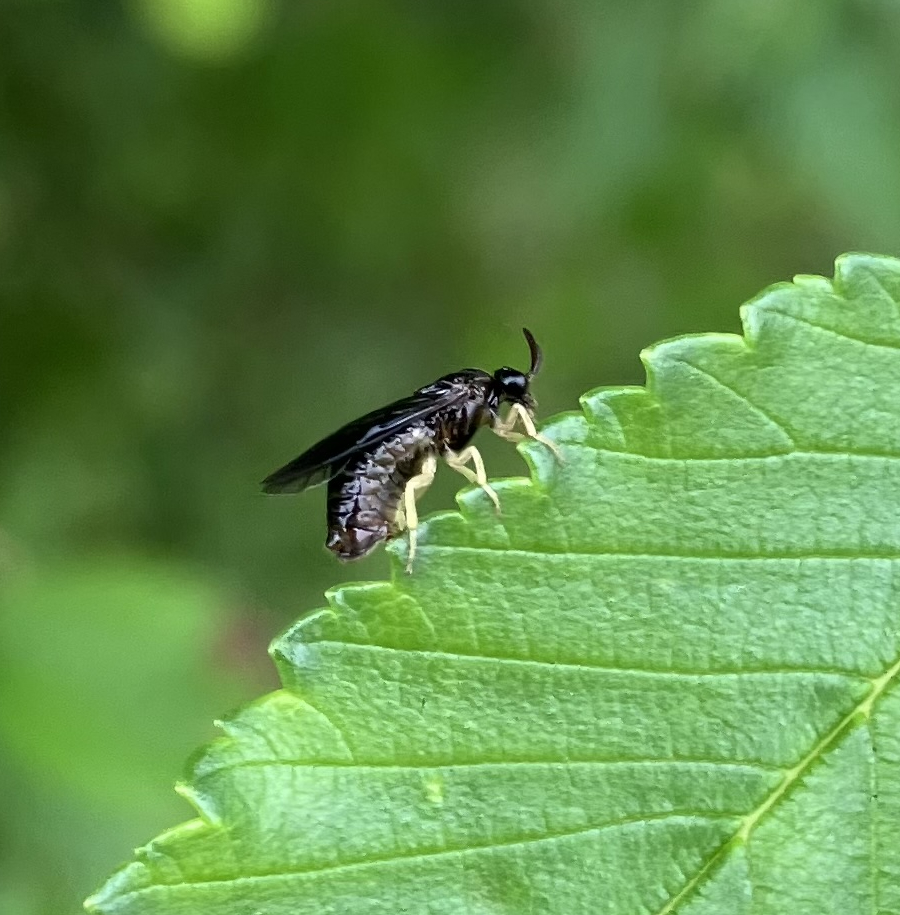
Photo credit: Mitch Lannan, WI-DATCP
EZS can produce multiple generations per year. The exact number of generations can vary by location and environmental conditions but can range from 1-6 per year. In some parts of Europe, 2-4 generations per year typically occur. At this time, it is not yet known how many generations will occur in Wisconsin each year.
How to Manage Elm Zigzag Sawfly
Damage from elm zigzag sawflies can vary significantly. In some cases, damage is minor/cosmetic and management is not needed. In other situations, damage can be severe, and management may be warranted to help preserve the health of high-value trees. To date, few scientific studies have looked at the management of this invasive pest. However, management approaches used for other sawfly species are expected to help with EZS.
Multiple factors can influence management decisions, such as the number and size of affected trees, time available to engage in management efforts, cost and personal preferences. Management options for individual or small numbers of yard and landscape trees are listed below. If choosing to use chemical pesticides, always read and follow all directions on the pesticide label.
- Tolerance: Trees produce an abundance of leaves and can generally tolerate some insect feeding without any concern. In many cases, doing nothing may be an appropriate course of action.
- Physical Control: Blast larvae off leaves with a stream of water from a garden hose or squish, hand-pick, or knock larvae into a container of soapy water. These options are time-consuming and labor intensive. They are most appropriate for small landscape trees and are not feasible for larger trees.
- Chemical Control:
- Organic and Reduced-Impact Sprays: Insecticidal soap, horticultural oils (e.g. neem oil), pyrethrins, spinosad, and azadirachtin are commonly used to manage other sawfly pests and are expected to help control EZS larvae. These products generally offer a very limited amount of residual activity, so multiple applications may be needed to maximize effectiveness. Tree size can be an important factor; these treatments are most appropriate for small trees that can be sprayed more easily.
- Conventional Insecticide Sprays: Conventional insecticide sprays containing pyrethroid ingredients (e.g., bifenthrin, cyfluthrin, cyhalothrin, cypermethrin, deltamethrin, permethrin, etc.) are commonly sold at hardware stores and garden centers for controlling insect pests on landscape plants and typically protect treated foliage for 1-2 weeks at a time. Tree size can be an important factor; these treatments are most appropriate for small trees that can be sprayed more easily.
- Consult a certified arborist: With large trees, spraying a tree’s canopy may not be feasible. Consider consulting a certified arborist to assess tree health and discuss management options for large trees in your yard.






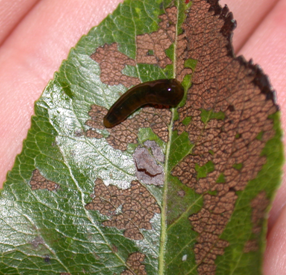 Pear Slug (Pear Sawfly)
Pear Slug (Pear Sawfly)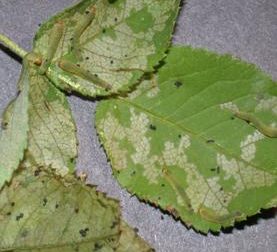 Roseslug Sawfly
Roseslug Sawfly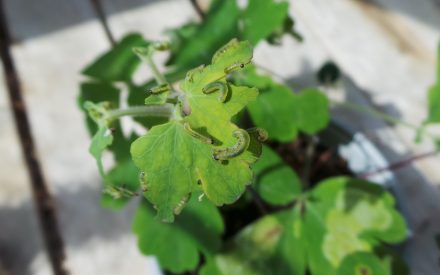 Sawflies
Sawflies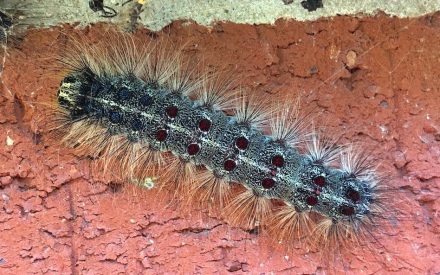 Spongy Moth
Spongy Moth


